The Turkish education system is a national, state-run setup built to train skilled people for the country’s social and economic growth. Rooted in Atatürk’s Reforms, it keeps a secular, democratic approach and aims to offer broad education to all. This strong system has changed a lot since the Republic began, with steady updates to curricula, growing use of modern technology, and wider school facilities to meet today’s needs.
By 2025, Turkey is a popular study destination for students from many countries and at many levels. It is known for high quality, especially in higher education, and for preparing active citizens for a global society. With a focus on access and steady improvement, it offers many paths and stands as an example for other countries.
Brief History and Development of Education in Turkey
The story of Turkish education is closely linked to the nation’s push to modernize. Before the Republic, schools were not unified and worked in three separate lines: traditional district schools and madrasas focused on Quranic studies and Arabic; reform schools and high schools that adopted new ideas; and colleges and minority schools offering education in foreign languages.
The Law of Integration of Education on March 3, 1924 brought these lines together. This key law closed the madrasas, developed the reform-oriented schools, and put the colleges and minority schools under the new Ministry of Education. A main goal was to build a secular school system, a basic principle of the new Republic.
Major Reforms in Turkish Education
Early Republican leaders passed many reforms to centralize and modernize schooling. The Law for the Education Organization on March 22, 1926 strengthened the Ministry of National Education’s authority. No school could open without the Ministry’s permission, and the Ministry prepared all curricula. Vocational-technical schools also moved under the Ministry, showing an effort to train a skilled workforce.
On November 1, 1928, Law no. 1353 introduced a new Latin-based alphabet. Literacy rose fast: by 1950 it was 48.4% for males and 20.7% for females, and it later reached 98.3% across the country. In the 1930s, after a suggestion by Albert Einstein, Turkey hired over a thousand academics, many escaping Nazi Germany, which strengthened universities in fields like medicine, math, and natural sciences.
Compulsory education also grew over time: five years until 1997, eight years from 1997, and then 12 years from March 2012 under the “4+4+4” model. These changes show Turkey’s effort to adapt schooling to social and global needs.
Evolution of the Curriculum
Curricula in Turkey have changed with political and social shifts. Early plans focused on a shared national culture and secular values. In 1927, religion courses were removed due to the presence of non-Muslim citizens. In 1949, a religion course returned for 4th and 5th graders. By 1956, religious instruction grew, and parents had to request exemptions. After the 1980 military coup, “The Culture of Religion and Knowledge of Ethics” became a constitutional requirement.
Recent changes have brought debate. In July 2017, a new curriculum removed evolution theory and added the concept of jihad. The state gives free textbooks, but many families still buy private books for quality reasons, even though using them in class is banned. History lessons often carry nationalistic views and reflect the state’s stance on events like the Armenian genocide.
Turkish Education System: Key Features
Turkey runs a state-supervised, centralized system that aims to give fair access and good teaching nationwide. It covers both formal and non-formal education and prepares students for university and work.
Compulsory Education Law and Duration
A main feature of Turkish schooling is that it is mandatory. Since 2012, children must study for 12 years, usually from ages 6 to 17. The goal is to raise overall education levels. These 12 years are split into three stages of four years each for a clear learning path.
Primary and secondary education in public schools are free. This helps remove money barriers to basic education. The Constitution of Turkey secures the right to education for all, regardless of language, race, gender, or religion. This policy shows a strong push for equal chances.
4+4+4 Education Model Explained
The 2012 law set the “4+4+4” model. It divides the 12 mandatory years into three four-year blocks: elementary, middle, and high school. It replaced the older 8-year primary stage and gave a more flexible path.
| Stage | Grades | Approx. Ages | Main Focus |
|---|---|---|---|
| Elementary | 1-4 | 6-9 | Basic literacy, numeracy, life skills |
| Middle | 5-8 | 10-13 | Core subjects; option for Imam Hatip middle schools |
| High school | 9-12 | 14-17 | General or vocational tracks; prep for university or work |

Children usually start primary school in September after turning six. The model brought back Imam Hatip middle schools, giving a choice between general middle schools and religious vocational schools. Primary schools now operate as separate elementary and middle school buildings.
Public vs Private Schools
Families can choose public or private schools. Public schools offer free primary and secondary education, reflecting the state’s investment in students. They follow curricula approved by the Ministry of National Education, which helps keep the same standards nationwide.
Private schools also follow Ministry rules but charge fees. They often stand out by offering international curricula, higher standards, and stronger foreign language teaching, sometimes with native speakers. Types include:
- Private Turkish schools
- Private minority schools (Greek, Armenian, Jewish; protected by the Lausanne Treaty)
- Private foreign schools (French, German, Italian, Austrian, American traditions)
- Private international schools
Public universities charge low fees. Private foundation universities cost more, sometimes up to $30,000 per year, but many offer scholarships.
Structure and Levels of Education in Turkey
The Turkish system is clearly organized into levels that build on each other, taking students from early years to advanced study. This setup supports a steady, step-by-step learning path.
Pre-primary Education
Pre-primary education is mostly optional and serves children from birth to 68 months, before compulsory primary school. It plays an important role in physical, mental, and sensory development, builds good habits, and prepares children for primary school. It also aims to create a shared learning setting and help children speak Turkish correctly.
These services run in independent nurseries, kindergartens, nursery classes, and practical classes in formal and non-formal settings. Public schools are free for ages 48-66 months, while younger groups or private options usually require payment. Nurseries (0-24 months) and daycare centers (25-66 months) are under the Ministry of Family and Social Services. Pre-primary education is required for children with special educational needs, with specialized schools under the Directorate General of Special Education and Guidance Services.
Primary Education
Primary education covers eight years for ages about 6 to 14. It has two parts: elementary (grades 1-4) and lower secondary (grades 5-8). It gives basic knowledge, skills, and behaviors for citizenship and prepares students for later levels. Public primary schools are free.
Early grades focus on Turkish, mathematics, Hayat Bilgisi (life knowledge), and a foreign language (often English). In grade 4, Hayat Bilgisi splits into science and social studies. By grades 6-7, core subjects include Turkish, mathematics, science, social studies, and a foreign language. In grade 8, social studies is replaced by “Turkish History of Revolution and Kemalism.” If a student fails a class, they repeat it the next year to build a solid base.
Lower Secondary (Middle) Education
Middle school covers grades 5-8 in the 4+4+4 model. Students build on earlier learning and start using more critical thinking across subjects. This is also when some students choose Imam Hatip secondary schools, which mix religious vocational studies with general education.
Core subjects include Turkish, mathematics, science, social studies (replaced by “Turkish History of Revolution and Kemalism” in grade 8), and a foreign language. Offering both general and religious options aims to serve different interests and needs. Primary and lower secondary schools are under the Directorate General of Basic Education, while Imam Hatip middle schools report to the Directorate General of Religious Education.
Upper Secondary Education
High school (lise) covers grades 9-12, the last four years of compulsory education. It prepares students for university, careers, and adult life. There are different types of high schools so students can follow paths that match their goals.
General High Schools
General high schools, including Anatolian high schools, offer a broad curriculum and prepare students for university entrance tests. All 9th graders follow a common plan. Subjects usually include:
- Turkish language and literature
- Mathematics, geometry
- Physics, chemistry, biology
- World history, geography
- Religion & ethics
- Physical education
- Two foreign languages (often English and German/French)
In grade 11, students often pick one of four tracks:
- Turkish language-mathematics
- Science
- Social sciences
- Foreign languages
Vocational and Technical High Schools
Vocational and technical high schools play an important role in training skilled workers. They mix general education with job-focused teaching so students can work right after school or study further in their fields. Examples include technical schools for boys and girls, trade and tourism schools, and religious education schools. Vocational training centers serve those who left formal schooling and offer needed job skills. Apprenticeships last 2-4 years based on the field. The Ministry of National Education supports trainees with insurance and exam options.
Higher Education
Higher education starts after high school and brings total study time to at least 17 years. It is active and growing, with over 200 universities as of 2022 and many programs and degrees. Turkey follows the three-stage Bologna system, which helps with international recognition.
Universities and Institutes
Higher education bodies include universities, faculties, institutes, higher education schools, vocational higher schools, conservatories, and research centers. Degrees include associate, bachelor’s, master’s, and doctorate programs. Teaching is usually in Turkish, but many programs run in English, French, or German, often with a preparatory language year.
| Degree | Typical Duration |
|---|---|
| Associate | 2 years |
| Bachelor’s | 4 years (Engineering: 5, Medicine: 6) |
| Master’s | 2 years |
| Doctorate | 3-5 years |
Turkish universities are well known abroad. Schools like Middle East Technical University, Istanbul Technical University, Koç University, Bilkent University, and Boğaziçi University often appear in global rankings. The Scientific and Technological Research Council of Turkey (TÜBİTAK) coordinates research and development, with 60+ institutes active in areas like agriculture, health, biotech, and IT.

Public vs Private Universities
Both public and private (foundation) universities offer higher education. Public universities make up most of the system, get state funding, and usually charge very low tuition, opening access to many students. They are known for strong programs, respected faculty, and solid research.
Private foundation universities often offer modern facilities and programs in foreign languages, especially English. They cost more, sometimes up to $30,000 per year, but many give full or partial scholarships based on merit or need. Since 1998, universities have had more freedom to manage themselves and to find funds through industry ties, which helps them respond faster to new needs.
Educational Curriculum and Language of Instruction
The Turkish curriculum is a carefully built plan to teach knowledge, build critical thinking, and share national values. Language of instruction, foreign language study, and the place of religious education all shape the student experience.
Core Subjects in Turkish Schools
From early primary years, students study key subjects. In grades 1-3, these include Turkish, mathematics, Hayat Bilgisi (life knowledge), and a foreign language. In grade 4, Hayat Bilgisi becomes separate science and social studies courses. In middle school, core subjects are Turkish, mathematics, science, social studies (changing to “Turkish History of Revolution and Kemalism” in grade 8), and a foreign language.
All 9th graders follow a common high school plan with Turkish language and literature, mathematics, physics, chemistry, biology, geometry, world history, geography, religion & ethics, physical education, and two foreign languages. This broad base comes before students specialize. The curriculum promotes critical thinking, creativity, problem-solving, and digital skills, and supports both independent and group learning. Regular updates keep it aligned with science and technology, and extracurricular activities help with personal and social growth.
Foreign Language Education
Foreign languages are a major part of schooling. English is the most common. In public schools, English usually starts in 2nd grade and continues through high school. A second foreign language arrives in high school. German, French, and Spanish are common, and some schools offer Italian, Japanese, Arabic, Russian, or Chinese.
Private schools often start English in kindergarten, spend more hours on languages, and hire native speakers. To improve public school results, the Ministry planned in 2011 to hire 40,000 foreign language assistants. Even so, many university students take a language “prep year” because standards vary, and both state and private universities offer these programs.
Language options have expanded:
- 2012: Kurdish (Kurmanji and Zazaki) as an elective from grade 5
- 2013: Abkhaz, Adyghe, Standard Georgian, Laz
- 2017: Albanian, Bosnian
- 2016-17 onward: Arabic as an elective from grade 2 with a staged plan to build all four skills by grade 5
Religious Education
Religious education has seen many changes. It was removed in 1927, brought back in 1949, and expanded later. After 1980, “The Culture of Religion and Knowledge of Ethics” became a constitutional requirement.
Today, religious education starts in grade 4 and continues through high school. Students get two hours per week in grades 4-8 and one hour per week in high school. About half the content covers religion and Islam, with other parts on secularism, humanism, ethics, and etiquette. Major world religions like Judaism, Christianity, Hinduism, and Buddhism are also covered. Schools pick their textbooks from those approved by the Ministry.
Bias and Reforms in Curricula
While aiming for broad learning, the system faces criticism for bias and frequent changes. History lessons often promote nationalistic views and present official positions. The denial of the Armenian genocide appears in textbooks, with hostile portrayals of Armenians. Earlier books often left Armenian presence out of Ottoman history, while newer ones speak of the “events of 1915,” deflecting blame or accusing Armenians of genocide against Turkish Muslims.
Exams for high school and university entry have changed many times since the early 2000s, causing debate. Some say topics on Atatürk have been reduced, positive sciences have less space, and religious content has grown. Though the state supplies free textbooks, many families buy private books due to quality concerns, even though using them in class is banned. These debates show how education, national identity, and politics are closely linked in Turkey.
Admission, Assessment, and Graduation
There are several checkpoints and exams that shape a student’s path. These tools help check academic progress and help students find fitting education and career routes.
National Examinations and Transition Points
Students face several key national exams. The system for high school admission has changed often, aiming for a better selection process. In high school, grade 9 is mostly standard. By grade 11, students usually pick one track (Turkish language-mathematics, science, social sciences, or foreign languages), which affects their focus and, in the past, their edge in entrance exams. Since 2010-2011, all high schoolers get a standard diploma, but tracks still guide university choices.
The main barrier for university entry is the exam system known as ÖSYS. Students must first pass a high school finishing exam at the end of grade 12. ÖSYS is run nationwide by the Student Selection and Placement Center (ÖSYM) each year. It gives four score types for the four main fields listed above. Students are placed in universities based on exam results, school grades, preferences, and available seats. Foreign students use separate paths, often the YÖS exam or accepted international credentials approved by the Council of Higher Education.
Grading and School Year Structure
The school year usually runs from mid-September to mid-June. It has two semesters, with a two-week winter break in January-February and a one-week break in the middle of each semester. Schools run Monday to Friday, with 35-40 hours per week. Crowded schools may use split shifts to handle numbers.
Grading checks student progress. If a student does not pass a class, they usually repeat it the next year to build a firm foundation. Universities also run two semesters, often October-January and February/March-June/July. They use the European Credit Transfer and Accumulation System (ECTS) to support international recognition and student mobility.
Education for International Students and Minorities
Turkey welcomes more international students and respects the rights of minority groups. Policies support foreign student entry, minority schooling, and more learning in different languages.
International Student Admission
Turkey has become a popular place for international students. Reasons include lower tuition than in many other countries, easier application routes, and strong programs with widely accepted degrees. The government plans to host around 500,000 foreign students and offers scholarships like Türkiye Scholarships, which drew 165,000 applications from 178 countries in 2021.
Entry routes include the YÖS exam for foreign students or international credentials like the SAT or a high school diploma accepted by the Council of Higher Education. For graduate studies, students apply directly to universities, with high school equivalence verified by a Turkish Embassy and a student visa. Some programs require exams like the Graduate Education Entrance Examination, GRE, or GMAT. Many universities offer intensive Turkish courses, and a good number teach fully in English, French, or German.
Education for Religious and Ethnic Minorities
The Treaty of Lausanne, a key document for the Republic, guarantees education rights for religious minorities. Private minority schools serve Greek, Armenian, and Jewish communities and date back to the Ottoman period. They admit Turkish citizens from these groups at pre-primary, primary, and secondary levels.
While religion classes were removed in the early Republic years, the treaty protected some language rights, such as instruction in Hebrew. Other languages, like Judaeo-Spanish, did not receive this protection. Over time, some minority schools that once taught in French moved to Turkish-medium teaching, which lowered the amount and quality of French in those schools and led some Jewish students to choose other language-medium private schools.
Education in Different Languages
Turkish is the main language of instruction, but there is growing room for other languages. Turkish must be taught as the mother tongue in most schools, but specially licensed and foreign schools are exempt. Some private foreign schools founded in the Ottoman era (French, German, Italian, Austrian, American) still teach Turkish children in their languages. Robert College (founded 1863) is a leading secular private school, and Galatasaray University and Galatasaray High School teach in French.
In public schools, English is the main foreign language, but the Ministry has added electives in other languages to support cultural diversity. Since 2012, Kurdish (Kurmanji and Zazaki) is offered from grade 5. In 2013, Abkhaz, Adyghe, Standard Georgian, and Laz were added, and in 2017, Albanian and Bosnian. Arabic has been an elective from grade 2 since 2016-2017.
Comparing Turkish and Global Education Systems
The Turkish system is active and changing, and it tries to stand out globally. To see how it performs, it helps to compare rankings and key features with other models, including those in the Middle East.
Turkey’s Global Education Ranking
Turkey has made big steps to improve education and gain international respect. Full alignment with the Bologna Agreement means Turkish degrees are recognized across Europe, which is key for work and study abroad.
In rankings like QS World University Rankings, several Turkish universities often place well in Europe. Middle East Technical University (METU) and Istanbul Technical University are strong in engineering and technology. Koç University and Bilkent University are praised for strong teaching and research and global outlooks. Boğaziçi University is known for liberal arts. Others such as Sabancı University, Hacettepe University, and Istanbul University often rank in Europe’s top 500. Turkey also takes part in Erasmus+ and runs programs like Mevlana and Farabi, which help its global profile.
Differences from Middle Eastern Education Systems
Compared with many Middle Eastern systems, Turkey mixes historical influences, secular rules, and steady modernization. Curricula are strong and aim to build critical thinking, creativity, problem-solving, and digital skills, with regular updates to match science and technology. Schools also use technology to build practical skills.
The system’s secular base comes from Atatürk’s Reforms. While religious education is mandatory, the main aim is to raise citizens who support secular and democratic values. In some Middle Eastern systems, religion shapes more of the curriculum. Turkey’s Ministry of National Education manages a centralized system, keeping a fairly standard approach nationwide. The mix of public, private, minority, and foreign schools, and the focus on foreign languages and exchanges, make Turkey more globally connected and adaptable in the region.
Advantages and Challenges of the Turkish Education System
Like any strong system, Turkish education has both strengths and areas to improve. Its good points attract many students, and its issues show where more work is needed.
Benefits of Studying in Turkey
Turkey offers many benefits for local and international students. Higher education quality is high. Many universities rank well in Europe, and degrees are accepted across Europe thanks to the Bologna Agreement and ECTS.
Costs are often low. Public universities charge small fees, and some education is free for Turkish students. Private universities cost more but offer many scholarships and aid. Beyond classes, Turkey’s rich culture and history make student life lively. The government offers student discounts, and living costs are often lower than in much of Europe. Also, regular curriculum updates, strong extracurriculars, and modern technology make learning more engaging. For many Arab students, cultural closeness helps with settling in.
Criticism and Common Issues in Turkish Schools
There are also problems. Frequent changes to exam systems for high school and university entry can create stress for students, parents, and teachers. Curriculum debates include removing evolution theory, adding certain religious content, and nationalistic framing of history, such as denial of the Armenian genocide in textbooks. These points raise concerns about academic freedom and historical accuracy.
Many say state-approved textbooks are low quality. Families often buy private books even if using them in class is banned, which adds costs. Public school foreign language teaching can be uneven, so many students take an intensive prep year at university. In big cities, heavy traffic and crowding also affect daily school life.
Education Accessibility and Cost
Access is generally good, especially for compulsory levels. Twelve years of free education in public schools for ages 6-19 opens doors for most children. Primary school enrollment reached 97% in 2019. The Syrian refugee crisis later caused a sharp drop, showing how outside events can affect access for vulnerable groups.
Higher education in public universities stays affordable with low fees and scholarships. Private foundation universities are much more expensive, up to $30,000 per year, which can block entry without aid. In 2002, total education spending (state, private, international) was $13.4 billion, and Turkey’s share of national wealth for education is higher than the OECD average. Still, buying private textbooks and paying private school or university fees can add big costs for families trying to get extra benefits.
Frequently Asked Questions about Turkish Education
Is Education in Turkey Free?
Yes. Compulsory education in public schools is free for ages 6-19. The state funds primary and secondary schooling for all citizens. Pre-primary outside public schools and private schools at all levels charge fees. Public universities have low tuition, while private foundation universities are much more costly.
How Long Is a School Year in Turkey?
The school year usually starts in mid-September and ends in mid-June. There are two semesters, with a two-week winter break between January and February, plus a one-week break in the middle of each semester. Schools run Monday to Friday, about 35-40 hours per week. Universities also use two semesters, often October-January and February/March-June/July.
What Are Common Failures and Success Rates?
Students who do not meet class requirements may fail and repeat the class the next year. While full national failure rates are hard to find, the system expects mastery before moving on. Primary enrollment reached 97% in 2019. In higher education, Turkey ranks second globally in access at 94.2%. There were 373,353 university graduates in 2006, and several universities place in global rankings, showing strong output of graduates.
Can Foreigners Study at Turkish Universities?
Yes. Turkey welcomes international students and offers programs like Türkiye Scholarships. Foreign applicants can take the YÖS exam or apply with credentials like the SAT or a high school diploma accepted by the Council of Higher Education. For graduate studies, students apply directly to universities and may need exams like GRE or GMAT. Many schools offer Turkish language courses, and many programs run in English or other foreign languages.


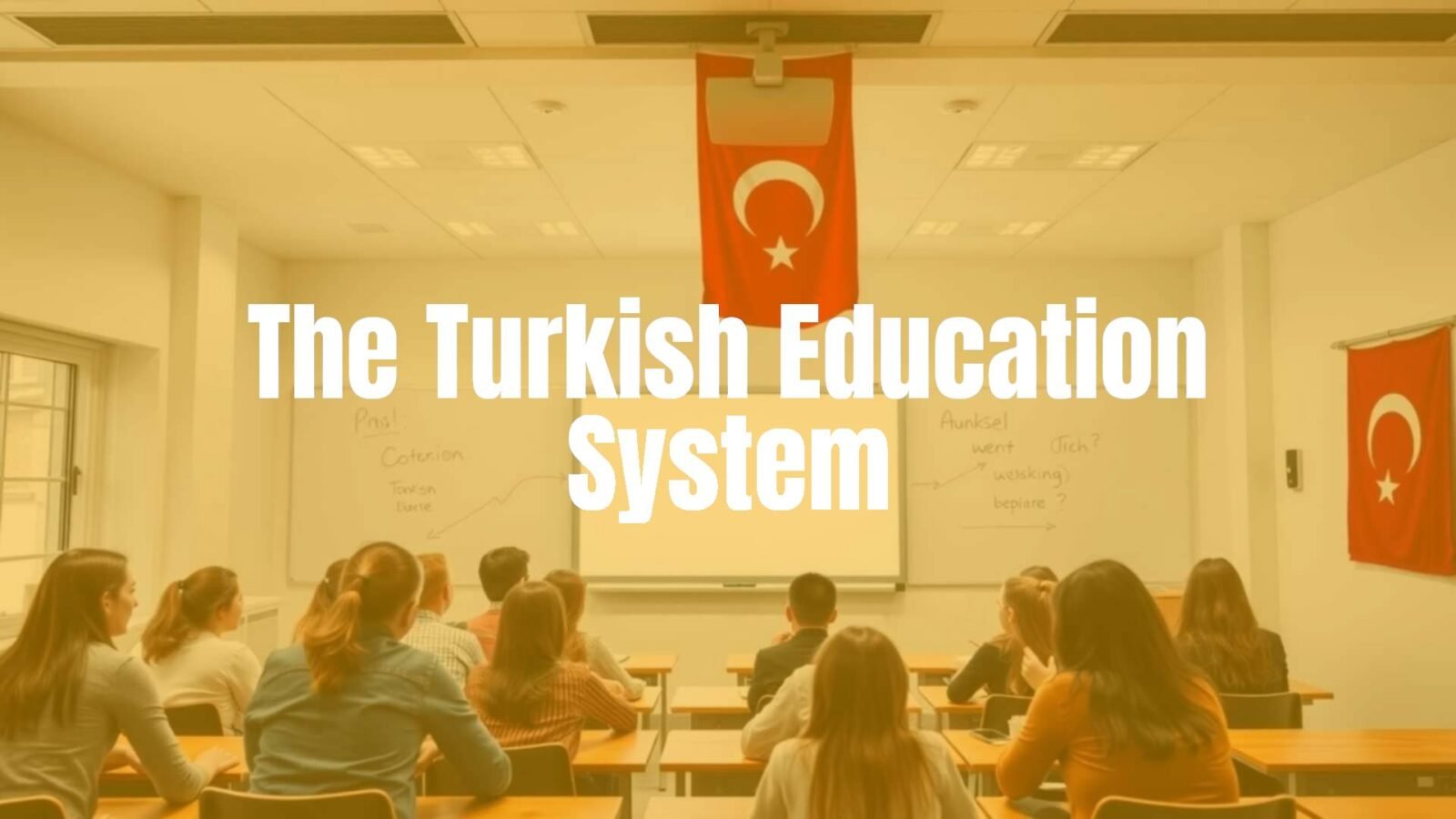


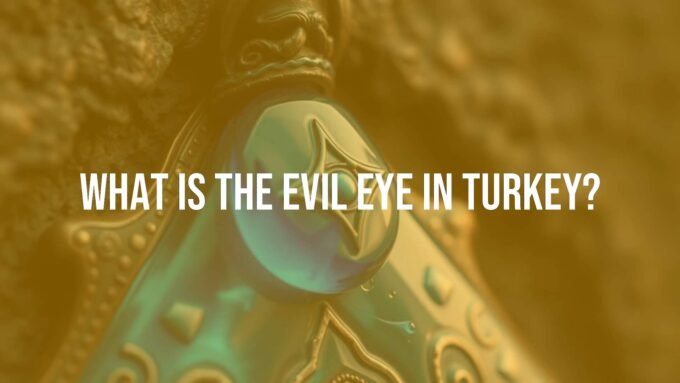


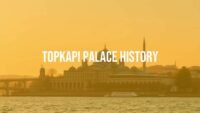

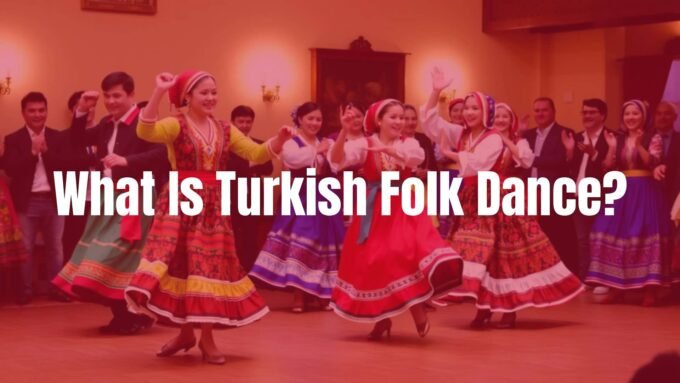
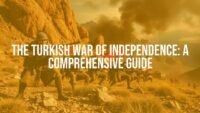
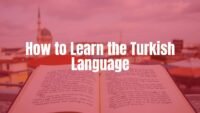

Leave a comment